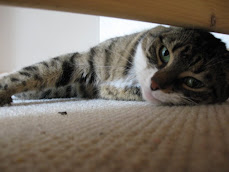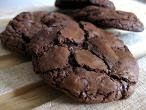In the end I settled on a lovely book which my friend Roz saw in a second hand bookshop in Saffron Waldon years ago, and bought for me. It’s called the Home Lovers Encyclopedia, and although it doesn’t have a publication date on it, I found it on an antiquarian book site dated to the mid-1930s. It’s full of tips of all kinds ‘for handyman & housewife’. I love dipping into it and discovering what skills and information were thought to be useful: ‘How the amateur apiarian [that’s bee keeper to you and me] may secure profitable results’;’Gate-leg tables and their making’; ‘Piano: how to clean’. Every one’s a gem, albeit one of dubious use in today's world. There aren’t too many recipes in it, and I finally found a section on baking almost crowded out by a perhaps excessively long consideration of how to play billiards (all illustrations featuring men only, naturally). There were some basic guidelines for simple cakes (‘points to remember about materials and methods’), but the one which caught my eye was the variation for gingerbread.
Gingerbread. Isn’t that a wonderful word? To me, it brings images of Novemberish evenings and Bonfire night (I have no idea why; the only ginger cake I remember from my youth was the Jamaican sort you get in an orange and brown wrapper from the supermarket, and we didn’t particularly eat it in November). In my imagination though, gingerbread is home-made, thick and moist and smells wonderful. Gingerbread is in fact a tricksy thing though. It can be all of those wonderful things, but it can also be a crispy ginger biscuit, preferably cut in the shape of a person. In fact it’s those that we did have more often as children, although our gingerbread man cutter wasn’t very well engineered, and their heads had a terrible propensity to come off as you moved them to the baking tray. I am always alert to this problem when selecting cookie cutters now, and have yet to find a gingerbread man cutter which meets my exacting criteria. This is also because I feel bad at buying a man, and feel I should also get a lady in the interests of gingerbread sexual equality, and for some reason that has just never happened.
This recipe was definitely for the cakey sort of gingerbread, although it was very sketchy on details. I had no idea how big a cake I was making, and the quantities were delightfully imprecise. Pounds I can cope with, but what is ¾ of a teacupful? We aren’t sufficiently genteel to own proper teacups, but I’m pretty sure it’s significantly less than ¾ of an American cup. I sort of guesstimated in the end, using a cup measurer but not filling it all the way. Then I was told to melt stuff over the fire. I revelled in the anachronism briefly and then turned on the hob. I was doing ok until I got to the bit that directed you to mix bicarbonate of soda in ½ a gill of milk. I have no idea what a gill is – is it big or is it small? I was woefully far from my computer, and The Scientist operates in metric. I guessed that it would be small and used a splash. It was with some interest, therefore, that I put my mixture in the oven, and even more with which I removed it about an hour and a quarter later. I’m pleased to say that my estimating and lack of forewarning on size worked out fine. I’d used a square brownie pan and was a bit worried the cake would be very flat, but it was ok. I cut it up as I was going to take it as a present to Rose’s mum when I saw her for lunch the next day, and the bit I tried was lovely. It wasn’t gooey, but was pleasantly moist, and very nicely flavoured. I may not have been a model 1930s cook with a white pinny and an army of under scullery maids – or even a person with a proper grasp of imperial measures, but I love the idea that I was making a cake which has served nurseries, tea tables, and no doubt cricket teas and school boy tuck boxes for centuries.
Oh, and it turns out that a gill is 5 fluid ounces, which also makes it 40 fluid drachms, and 2400 minims. And almost certainly more than my splash. Now I must go and read about gramophones: their choice and care.
Gingerbread (from The Home-Lovers Encyclopedia, c.1930)
‘A good plain gingerbread is prepared as follows: Melt ¼ lb sugar, ½ lb margarine, and ¾ teacupful of golden syrup in a saucepan over the fire. Beat up 2 eggs, and when the melted syrup is cool, add them to it and beat all together. Sieve together 1 lb flour and 2 teaspoonfuls of ground ginger, make a well in the centre, and into it pour the syrup, etc., mixing and beating the whole thoroughly.
Dissolve ½ flat teaspoonful bicarbonate of soda in ½ gill of milk, mix it with the other ingredients, and turn the mixture into a greased cake tin. Bake the cake in a moderately hot oven for 1 to 1 ½ hours, then turn it onto a sieve and leave until cold.




7 comments:
thank you for a thoroughly enjoyable read - I loved the discussions on the fire and the gill - and I think the 3/4 tea cup makes me wonder about our modern need to be precise with measurements (which doesn't affect me too much)!
I have seen those gingerbread men cutters with the head or leg fallen off and wondered what sort of perfect baker needs help because their heads and legs don't just fall off anyway!
A gill of milk? I was thinking a gallon of milk haha Thanks for entering!
You did incredibly well considering the directions :) The gingerbread looks beautiful! A 1930's recipe, what a great idea! There are so many fun roundups to join and this one was perfectly suited for you. What a nice gift to give and a wonderful explanation to go along with it.
heh heh, and good photo. i LOVE jamaican ginger cake, hint hint :)
I screwed up making gingerbread cookies one year & made it into a loaf like this. Very delicious. And yes, the very worg gingerbread comjures up warm & toasty memories.
For your daily dose of vintage goodness & a bit of silliness, stop by Confessions of an Apron Queen, the home of Vintage Thingies Thursdays.
Gingerbread is the best!
Looks just lovely, it's been a long time since I had real gingerbread. Thanks for taking part in WCC this month.
Post a Comment